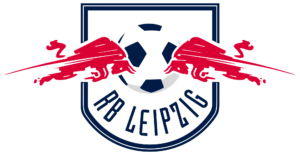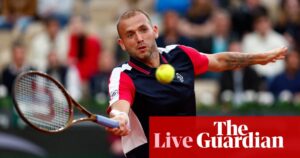
Shortly after his first opening‑round defeat on Court-Philippe Chatrier, Rafael Nadal arrived at the press conference room for his postmortem in a jovial mood. After a career of dominance at Roland Garros, where he has so often been untouchable even against some of the sport’s greatest players, he would have been forgiven for feeling a sense of injustice and frustration with a straight‑sets defeat in the first round against Alexander Zverev. Instead, he felt progress. “I was not that far,” Nadal said. “That’s my feeling.”
His demeanour further underlined what has been increasingly clear over the past few weeks. If this really is the end and retirement is imminent it will be because his body made the decision, not his mind. It seems clear that the player who turns 38 next week would love to further elongate his career and he is determined to do everything possible to try.
A month ago, Nadal returned to competition in Barcelona and Madrid still unsure about whether he would even make it to Roland Garros. He had good reason to doubt. After the countless physical issues he has endured, from hip surgery to complications and many unrelated injuries, his ambitions were low. He simply wanted to be sure his body could physically withstand the load of competing at the highest level across the best of five sets.
By those parameters, Nadal’s presence at Roland Garros was actually a step forward. He made it back to the most important court of his career performing at a decent level, he made life uncomfortable for one of the tournament favourites, and he departed still feeling in good physical shape.
Nadal felt he could have beaten many other players in this year’s field, and a better draw would have allowed him the opportunity to build his form round by round. Roland Garros came too late in his recovery and he was handed a nightmare draw, but it was far easier to accept than being out of the game without a hope of making progress.
“I cannot tell you if I will be or not will be [ready] in one month and a half, because my body has been a jungle for two years. You don’t know what to expect. I wake up one day and I found a snake biting me. Another day a tiger,” Nadal said, smiling. “[It] has been a big fight with all the things that I went through, no? But the dynamic is positive the last few weeks. I felt ready. I think tomorrow I will be ready to play again if I have to. But I will not have to.”
On the court, being able to train consistently for five weeks has allowed Nadal to gradually improve, and to eventually reach the point where he was able to train without limitations this week for the first time in 15 months.
He has also been travelling with his entire family, including his parents, wife and, for the first time, his son. After such a difficult period, he has been able to return to the familiar lifestyle of a tennis player, a sensation that has been energising.
This has been a fascinating period for farewells and the varying motivations of players late in their careers. Last week Dominic Thiem, who faced Nadal in consecutive French Open finals in 2018 and 2019, affirmatively contested his final French Open at 30 years old, losing in the qualifying draw. After injuries and burnout, it was unusual and interesting to hear Thiem describe his decision to retire in logical and rational terms. He argued that continuing into his late 30s, like Nadal and his rivals, is still abnormal. “I had a very intense career,” Thiem said. “I don’t really feel like I’m 30 or 31, I feel tennis‑wise a bit older, to be honest, so that was very intense.”
after newsletter promotion
Despite his long list of injuries and ailments, Nadal does not appear to have reached that point. He is still determined to commit himself to the work ahead, to push himself to see how far he can go. The looming question over the coming months will be whether his body ultimately scuppers those ambitions.
Limiting the risk of injury will also likely mean no Wimbledon. After his recent struggles, the prospect of switching from clay to grass and then back to clay in time for the Olympics in late July is too risky for him to compete on grass.
“I need to give myself a little bit longer chances to see if my level is growing and my body is holding, and then let’s make a decision,” Nadal said. “But give me two months till Olympics, and then let’s see if I am able to keep going or I say: ‘OK guys, it’s more than enough.’ Let’s see.”
Source: theguardian.com



















